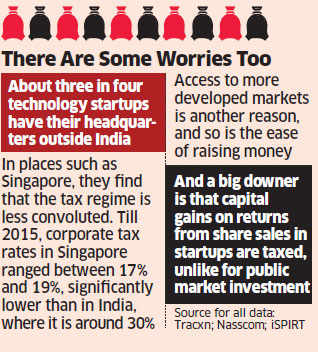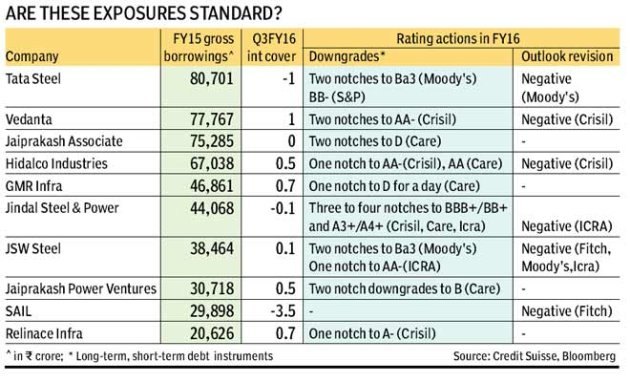Suncapital: In a recent column in this newspaper (“India is an outlier in its tax policy”, 23 February), my IDFC Institute colleague, Praveen Chakravarty, and I peered into the Pandora’s box of public finance in India, arguing that India’s tax to gross domestic product ratio (GDP) is low by any relevant empirical benchmark. That particular trunk was prised open by French economist Thomas Piketty on a recent whirlwind tour of India. Readers will recall that it is he who has argued both that taxes are too low as a share of GDP, and that this contributes to a worsening inequality problem in India.
Now, the Economic Survey 2015-16 has a chapter devoted largely to tax to GDP ratio—for the first time so far as I am aware. Arvind Subramanian, chief economic adviser and architect of the survey, deserves enormous credit for turning what to many might have been an arcane technical issue into a live public policy debate.
The headline finding in chapter 7 of the survey is that, when controlling for GDP per capita, India is not, in fact, a negative outlier, as Chakravarty and I had claimed. Who is right?
Start with a simple statistical argument: an outlier is always relative to a given data set. So while, as we ourselves documented, the data clearly show that India’s tax to GDP ratio is low compared not just to the Organisation for Economic Co-operation and Development but also emerging economies—see table 1 in chapter 7—the report then goes on to argue that this vanishes when controlling for the level of per capita GDP, as presented in figure 2.
However, the report itself then establishes—see figure 3 and table 2—that when democracy is added as an additional control, India re-emerges as a negative outlier in total tax to GDP ratio, as also total government expenditure and especially health and education expenditure as shares of GDP.
Further, I would conjecture that, were an additional control added for resource-rich economies whose public finance is markedly different from other major economies, the survey’s finding would be enhanced further, and India would be even more of a negative outlier in its tax to GDP ratio. Preliminary results by Chakravarty reinforce this conjecture.
One other claim in the chapter needs to be probed further. In section 7.13, it is asserted: “India’s tax to GDP ratio has increased by about 10 percentage points over the past six decades from about 6% in 1950-51 to 16.6% in 2013-14.”
While this is true, it is incomplete and perhaps misleading. As Chakravarty and I documented, this increase occurred almost entirely in the first three decades, whereas the tax to GDP ratio has remained largely flat in the 16-17% range since 1991, the year that launched economic reforms. Further, our analysis demonstrated that there is, in statistical jargon, a structural break in 1991, as even eyeballing the data suggests.
This poses an enormous public policy puzzle, and indeed it contradicts the survey’s claim that tax to GDP ratio tends to rise with per capita income. For, in India’s case, tax to GDP ratio rose during a period when growth of GDP per capita was fitful and slow, whereas, when GDP per capita took off after 1991, tax to GDP ratio did not keep pace!
The bottom line of the empirical research is that, depending on how you slice and dice the data, you can find that India’s tax to GDP ratio is a negative outlier, as Chakravarty and I argue, or that it is not, as the Economic Survey argues. This invites the question, is there any theoretical basis to assert that tax to GDP ratio should rise with per capita income?
As it happens, the survey chapter does not provide a persuasive theoretical counterpart to its empirical findings. There is some suggestion that the state’s legitimacy and taxing capacity may rise with per capita GDP, thereby allowing tax to GDP ratio to increase. But this argument is not rigorously articulated. Nor does it allow for the possibility of reverse causation, such that a rising tax (and government spending) to GDP ratio allows GDP per capita to rise more rapidly, which could confound any causal claims based on the survey’s empirical results.
My own hunch is that, as a baseline, the tax to GDP ratio is likely to remain approximately constant as GDP per capita rises, at least for mature economies, however one defines these. (For the wonkish: this would follow if the income elasticity of government spending is approximately unity, and if government spending is financed, on average, only by current taxes, so that, on average, the government is running a balanced budget.) What this implies is that, once society has decided how much it wants to spend—which fixes the ratio of government spending to GDP—the tax to GDP ratio will be pinned down, and thereafter tax and government spending will rise roughly in proportion to GDP, so that the ratios will remain approximately constant.
In simpler language, in the long run, Indian governments will choose to tax more, if they wish to spend more. That appetite seems lacking at present. There’s the rub.









